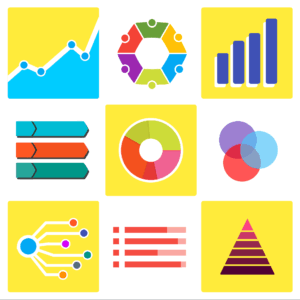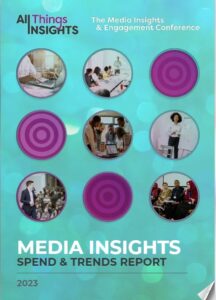Overall takeaways from the track follow, but click the below links to dive into each session:
- Can AI Predict Consumer Insights? Testing GenAI’s Role in Market Research: Michael Bagalman, Vice President, Business Intelligence and Data Science, STARZ
- AI Driven Solutions Showcase: Darren Breese, Vice President, Online Qualitative Research, C+R Research, Matt Werner, Vice President, Quantitative Research, C+R Research, Siddarth Sudhakaran, Partner, Kantar, Anurag Banerjee, CEO, Quilt.AI & Betsy Shaak, Head of Product, Voxpopme
- Lessons Learned from Implementing AI Agents in Market Research: Rick Kelly, Chief Strategy Officer, FuelCycle
- Integrating AI into Research: A Practical Guide: Shomir Chaudhuri, Senior Manager, User Research, Dexcom & Betsy Shaak, Head of Product, Voxpopme
- Beyond Real: Harnessing Synthetic Market Research Data to Accelerate Business Insights: Joshua Hawthorne, Research Operations Leader, LinkedIn
Key Takeaways
- AI Is a Tool, Not a Magic Wand: Success with AI depends on human direction, oversight, and critical thinking.
- Research Is Becoming Faster and More Flexible: AI is collapsing timelines and extending reach — but humans still steer the strategy.
- Trust and Transparency Are Non-Negotiable: Whether using AI agents or synthetic data, clear validation and human-in-the-loop systems are essential.
Kicking Off with Curiosity: Can AI Think Like a Consumer?
Michael Bagalman from STARZ set the tone for the day with a refreshingly honest question: Can AI predict what consumers think?
Turns out… not quite — at least not yet. Michael walked us through his personal experiment feeding survey data into ChatGPT to see if it could fill in missing responses. The results were mixed: sometimes surprisingly accurate, sometimes way off-base.
The big takeaway wasn’t that AI failed — it was that AI is only as good as the prompts we give it and still needs human oversight to catch when it gets weird. It’s a reminder that tools like generative AI are fantastic accelerators, but we’re still the pilots.
From Rapid Solutions to Smarter Conversations: The AI Showcase Takes Over
The mid-morning AI-Driven Solutions Showcase, hosted by Seth Adler, was a rapid-fire sprint through how AI is reshaping research workflows — without replacing what makes research great.
C+R Research showed off AI-powered personas that simulate focus groups and brainstorm ideas (without needing pizza or gift cards).
Kantar introduced Kaya, an assistant that connects real marketing frameworks to live insights.
Quilt.AI blew minds by analyzing not just text, but images, videos, and social signals with powerful GAN and diffusion models.
And Voxpopme made video research faster and easier, letting researchers ask questions directly to the database and pull emotional showreels in minutes.
Through it all, Seth reminded us: “These tools aren’t magic. They’re there to help humans ask better questions — and interpret better answers.” The excitement wasn’t about tech for tech’s sake. It was about tech making humans even more powerful.
Meet Your New Teammate: The Rise of Agentic AI
In the next session, Rick Kelly from Fuel Cycle took things even further — talking about Agentic AI, where multiple AI agents work together, orchestrated under human control, to manage full research workflows. Think of it like building a virtual research department: one agent writes a survey, another analyzes it, another drafts the report — and you, the human, stay in charge, steering the ship.
Rick emphasized two key things:
• Transparency is critical (no black boxes).
• Humans must stay in control (no runaway AI decisions).
Agentic AI isn’t about automating people out of research. It’s about making the research process smarter, faster, and more reliable, freeing humans to focus on strategy, creativity, and relationship-building.
How to Actually Integrate AI (Without Breaking Everything)
While it’s easy to get hyped about futuristic tech, Betsy Shaak from Voxpopme and Shomir Chaudhuri from Dexcom brought the conversation back down to earth with a practical, step-by-step guide for how to integrate AI into everyday research workflows.
Their message was clear: start small, be strategic, and keep it human. They showed how AI could save time at every step — drafting stakeholder summaries, writing initial survey questions, generating code frames — but stressed that humans still need to refine, verify, and adapt.
In their view, the winning formula is AI doing 50-70% of the groundwork… and humans doing the final shaping. It’s a collaboration, not a hand-off.
Beyond Real: How Synthetic Data is Expanding What’s Possible
Joshua Hawthorne from LinkedIn closed the day with a seriously thought-provoking session on synthetic market research data — AI-generated data that extends real-world insights into areas that traditional methods struggle to reach.
Joshua explained that synthetic data isn’t about replacing real consumers. It’s about filling gaps, speeding up testing, and enriching understanding where time, budget, or access might otherwise be barriers.
But he also emphasized the non-negotiables:
• Demand transparency in how synthetic data is created.
• Insist on rigorous validation methods (not just hand-waving).
• Use synthetic data strategically — never blindly.
Joshua’s call to action? Be a discerning buyer. Ask hard questions. Know exactly what you’re getting.
A New Era of Human-Led, AI-Enhanced Research
Day three of TMRE @ Home wasn’t just about flashy new tech — it was about redefining how humans and machines can collaborate to make research faster, smarter, and more meaningful.
Across every session, one thing was clear:
AI is a force multiplier — not a mind reader. It can extend our reach, streamline our workflows, and help us move at the speed of business. But it still takes human intuition, creativity, and rigor to turn data into real insight, and insight into real action.
The future of market research isn’t man or machine. It’s man + machine, together — at their best.
10 KEY ACTIONABLE TAKEAWAYS
- AI Implementation in Research Workflows
- Create a clear validation framework that requires human oversight at key decision points in AI-assisted research
- Prompt Engineering for Research
- Develop a standardized prompt library specifically designed for market research applications with proven effectiveness
- Multi-Agent AI Systems
- Implement an orchestrated AI system where different agents handle specific research tasks (survey writing, analysis, reporting) under human supervision
- Synthetic Data Integration
- Establish protocols for validating and incorporating synthetic data to complement traditional research methods
- AI-Enhanced Video Research
- Deploy AI tools to analyze video feedback for emotional cues and create quick insight summaries
- Strategic AI Adoption
- Start with a 50-70% AI groundwork approach, maintaining human refinement for final outputs
- AI-Powered Persona Development
- Utilize AI to create and simulate focus group scenarios for faster insight generation
- Transparency in AI Tools
- Implement a documentation system that tracks AI’s role in research processes and decision-making
- Cross-Platform Analysis
- Deploy AI tools that can analyze multiple data formats (text, images, videos, social signals) simultaneously
- Human-AI Collaboration Framework
- Create clear guidelines defining which tasks should be AI-assisted versus human-led in the research process
TMRE @ Home 2025:
Day 1: From Insights to Impact: How TMRE @ Home 2025 Brought Research to Life
Day 2: Merging Minds and Machines: How TMRE @ Home Redefined Insights for the Future
Day 3: AI, Insight, and the Human Factor: A New Blueprint for Market Research
Contributor
-

Seth Adler heads up All Things Insights & All Things Innovation. He has spent his career bringing people together around content. He has a dynamic background producing events, podcasts, video, and the written word.
View all posts



















































































































































































































































